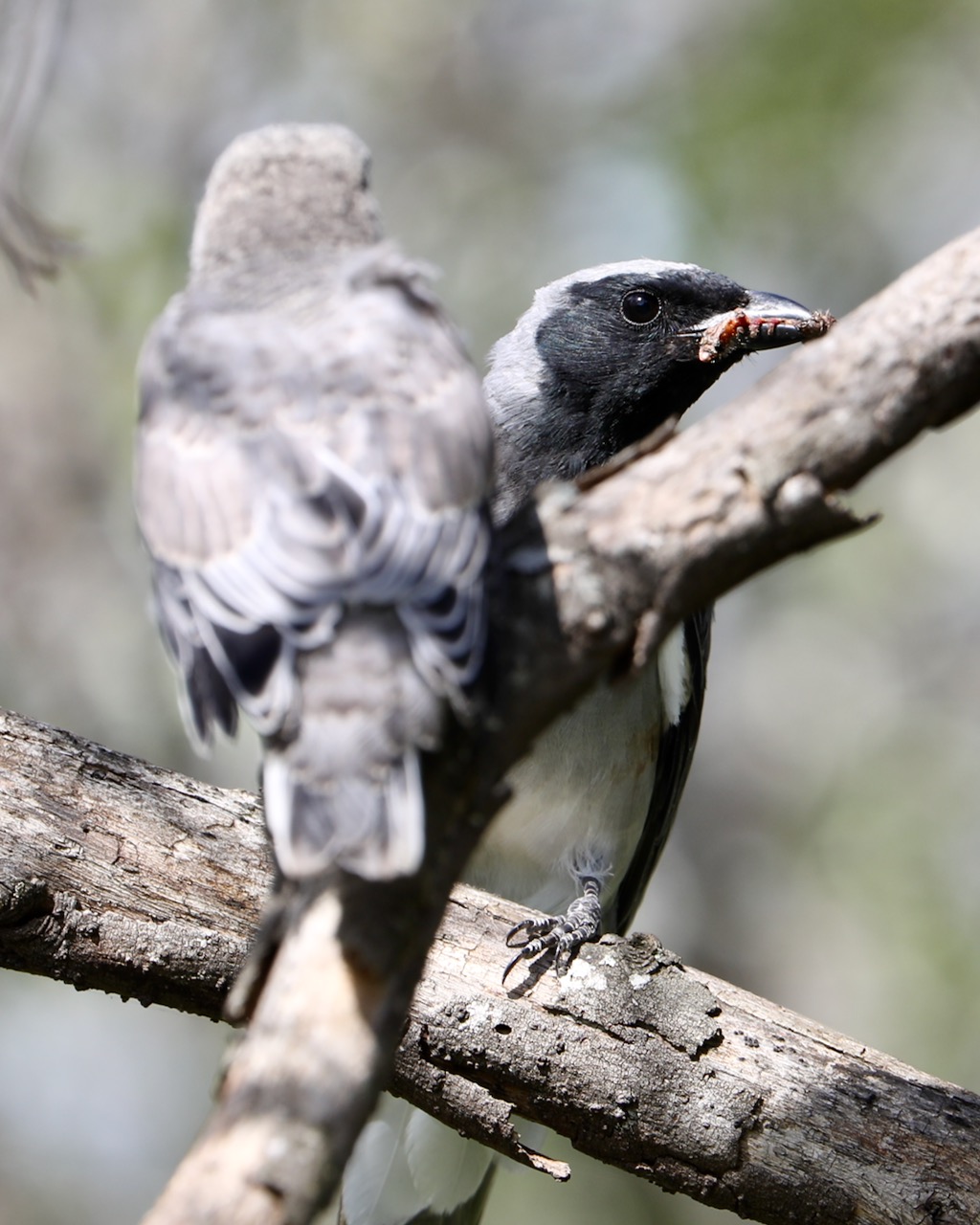To end the Avithera posts for 2021 I will go back to the start of the year to some photos I took of a very young Black-faced Cuckoo-shrike just out of the nest.
The incessant call of the young bird in our garden attracted my attention. It did not take long to find the chick. I suspect it may have left the nest prematurely. It could barely fly and as it fluttered from one perch to another, landing clumsily each time, it made its way through our garden to the old abandoned orchard where its parents fed the hungry chick for a few days before I lost track of it.
Please click on photos to enlarge.
The young bird’s first set of feathers were beautiful, ranging from soft pale greys to black.
One of the parents arrived with a juicy green caterpillar. It was wary of me and approached the chick using a tangle of branches as cover.
The chick was not bothered by me, it just wanted to be fed.
The parent soon overcame its concern for me and delivered the caterpillar.
The parent was soon back with another caterpillar, a brown one this time.
I kept an eye on the chick from a distance as it moved about the orchard, its calls to be fed showing me where it was located. After a few days it stopped calling – I assume it had grown strong enough to move on. I did not see any other young birds. It is possible the chick’s siblings – BfCs’s usually have 2-3 young - remained in the nest under the care of the their parents and the young bird in our orchard left the nest prematurely by accident.





















